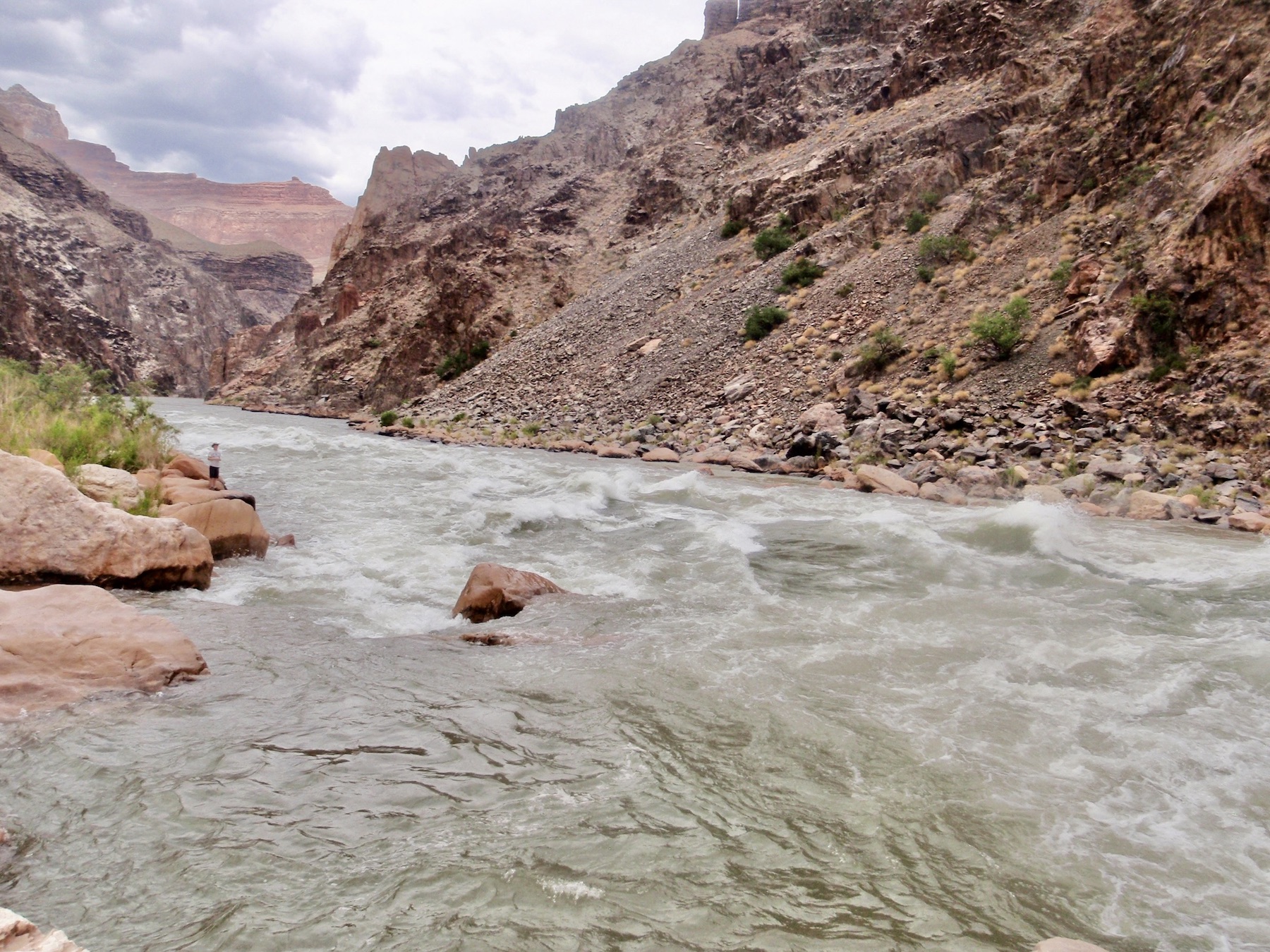Some information may be outdated.
In the desert, few issues are as crucial as water. As a historic megadrought continues in the West, water usage is at the top of mind for many scientists. Hydrologists can help us understand how and when to enact new water policies. In this week’s column, Science Moab highlights important messages from conversations with hydrologists, speaking with Eric Kuhn, Jack Schmidt, Brian Richter, and Arne Hultquist.
Science Moab: Are we bound by water usage policies enacted years ago? If nature can’t sustain those, what then?
Eric Kuhn: One hundred years ago, we had some flexibility because the river was not very well-used. Today, not a drop of the Colorado River reaches the Gulf of California, so we don’t have that luxury. The way I look at it is: we legally allocated water based on an assumption that this river system had about 20 million acre-feet. Today, we think it’s more like 13, and it might be less in the future with climate change. Predictions and models show that increasing temperatures are going to reduce flows to the Colorado River. The drama is not how much water we’re going to have in the future — we know it’s going to be less. The drama is how we’re going to decide who gets less water, and when.
•••
Science Moab: What about the environmental impacts of low water flows, climate change, and the dam itself?
Jack Schmidt: We have learned that when Lake Powell is low, the water released into the Grand Canyon is much warmer. The Grand Canyon has a unique fish ecosystem, and it’s a refuge for the largest population of endangered humpback chub on earth. If you change that temperature, you might shift that novel ecosystem. At the same time, many fish biologists view the far western Grand Canyon as the most favorable place for native fish fauna anywhere in the Colorado River Basin. Why? The river is warm down there, but with Lake Mead low, there’s a hair-raising rapid at Pierce Ferry, which blocks undesirable non-native reservoir fish coming from Lake Mead. So if you kept Lake Mead relatively full and you inundated that rapid, you would eliminate the barrier, and non-native fish would swamp the Grand Canyon.
•••
Science Moab: At the start of 2021, Lake Powell was at 41% of its capacity. Why should we be so concerned that Lake Powell levels continue to fall to all-time lows?
Brian Richter: Lake Powell serves three really important benefits. One is that it generates hydropower from the Glen Canyon Dam, which provides electricity throughout the southwestern United States. Two, Lake Powell is important for tourism, which is impacted by falling water levels. But by far the biggest concern is that if Lake Powell drops by another 85 feet — and for reference, the lake level dropped by more than 30 feet in 2020 — then the lake will drop below the hydropower outlets, so all the electricity production out of Glen Canyon Dam will stop. But even worse is that it will become physically impossible to move enough water into the Lower Basin states to provide for their water needs.
If we end up in that situation, it’s going to cause a crisis. It’s almost certain that the Lower Basin states would issue a “compact call,” forcing the Upper Basin states to drastically and rapidly reduce their water use to send more water downstream. And remarkably, some of the first users getting cut off in that scenario are the big cities: Denver, Colorado Springs, Albuquerque. And this cascade would all start with Lake Powell dropping too low.
•••
Science Moab: Why, then, test the ambient water from streams, lakes, and springs? What are you looking for?
Arne Hultquist: The state is required by the Clean Water Act to test a portion of their waters to see if they meet their beneficial uses. The beneficial uses are a setup for whether the water itself is a potential source for drinking water, play, recreation, fisheries, or irrigation – or all of the above. In terms of why I am sampling water quality for the state, it’s to quantify whether or not we’re meeting those beneficial uses and attaining minimal standards.
In a desert community, it is sometimes tough to meet those minimum standards. It’s a challenge to keep water below 20 degrees Centigrade, or 70 degrees Fahrenheit, in the desert. For a cold water fishery, for instance in Mill Creek above the Bureau of Land Management boundary, coldwater fish have had to acclimate to warmer water. Remember, humans are much larger animals than fish. Our drinking waters generally have less restrictive standards than the cold water and warm water fishery standards do in terms of chronic illness and certain materials like metals.
The other thing you need to remember with fish is that they don’t live in an average condition. They live in an instantaneous condition. They have to live in whatever they’re dealing with. Whereas as humans, we drink water from different sources. They all contain a variety of levels of all kinds of constituents. On average, our bodies take care of most of that. Sure, if we were to drink ammonia, we’d get sick. The point is that in terms of the minor concentrations of characteristics out there, the fish are much more susceptible to changes in those concentrations and to higher concentrations than we are.
Science Moab is a nonprofit dedicated to engaging community members and visitors with the science happening in Southeast Utah and the Colorado Plateau. To learn more and listen to the rest of these interviews, visit www.sciencemoab.org/radio.
Appreciate the coverage? Help keep local news alive.
Chip in to support the Moab Sun News.





